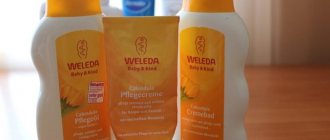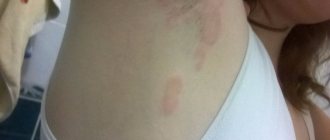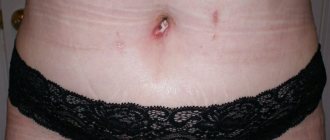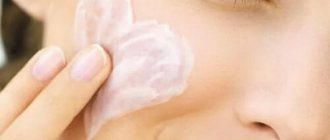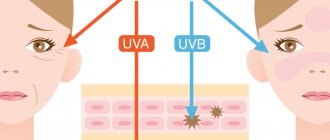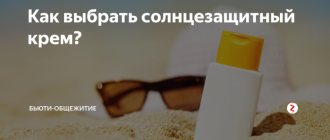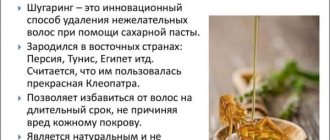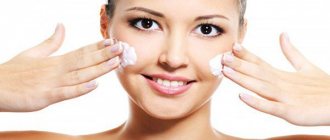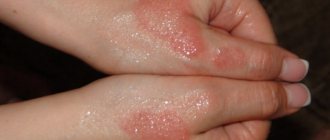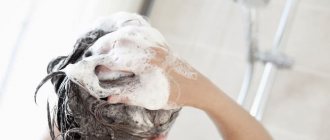Cosmetics of the La Roche-Posay brand are intended primarily for the care of sensitive skin. Any product contains organic filters that are safe for any skin type, can be used in pediatric practice and reduce the likelihood of developing any inadequate skin reactions to the sun to the possible minimum.
Any product from the series under consideration has the following characteristics:
- prevents possible consequences after exposure to direct sunlight;
- the degree of protection against ultraviolet radiation is very high - SPF 50+, but you can find an indicator not exceeding 30+;
- the products contain a complex of natural ingredients: carnosine, vitamin E, thermal water, baicalin, which neutralize rays of varying intensity and protect the skin from harmful infrared radiation;
- Almost all adult products and, without exception, children's products do not contain parabens, fragrances or fragrances, which makes them hypoallergenic.
Sunscreens, sprays and other products are declared by the manufacturer to be water-resistant, so they continue to perform their functions even after swimming twice a day for 20 minutes each.
Types of La Roche-Posay products:
- Sunscreen. It has a light structure, is evenly distributed, is quickly absorbed and can be used for the body and face. The product is allowed for use even in the presence of dermatological diseases and a history of allergic reactions. The cream contains no chemical compounds in the form of preservatives, fragrances, perfume fillers, or parabens. It is water resistant and requires updating every 2 hours.
Anthelios XL 50% La Roche Posay Spf 50+
- Anti-greasy fluid. A unique product that is used to protect the skin of the face from rays. It has a liquid structure, homogeneous and light, which makes its consumption minimal. There is no specific aroma. The fluid can be applied not only to cleansed skin, but also over light makeup. Immediately after treatment, the skin begins to shine slightly, but this is not an oily sheen, but the radiance of the smallest particles that make up the product.
The product does not clog pores, allows the skin to breathe, but does not moisturize it enough. Therefore, it is better to use the product on oily dermis, but it can also be used on normal skin. Foundation, dry powder, and blush fit perfectly on the fluid. Even after several hours of exposure to the sun, decorative cosmetics do not pill, slide or run.
La Roche-Posay Toleriane Ultra intense soothing fluid for hypersensitive and allergic skin 40 ml
- Sunscreen milk. Positioned as a product for children's skin. But it can and should be used for adults, because the milk has the following features: it is evenly distributed over the body and face, it is quickly absorbed and does not leave streaks or stains, it moisturizes well and does not cause irritation.
Immediately after applying the product, the skin begins to actively shine, but after 3-5 minutes the dullness is restored. A one-time application of the product is enough for safe exposure to direct sunlight for 6 hours. Pediatricians recommend renewing the coating every 2-3 hours. The milk is positioned as waterproof.
Sunscreen milk for face and body SPF 50+ La Roche-Posay Anthelios XL Milk SPF 50+, 250 ml
- Sun spray. The product does not dry the skin, does not provoke peeling and redness, because the composition does not contain alcohol or its derivatives. It is completely absorbed, does not leave white streaks on the skin, and does not stain clothes. Moisturizes the skin, prevents it from drying out at sea, under the hot wind, and fully protects against the formation of burns.
The instructions indicate that the spray protects the skin for 6 hours without rinsing, but if you need to be in direct sunlight for a long time, experts recommend reapplying the product every 2 hours. It does not contain alcohol or chemical compounds, it can be used even with severe symptoms of some dermatological diseases.
La Roche-Posay Sunscreen Anthelios XL 50+ SPF Spray Sensitive Skin
Sunscreens “La Roche-Posay” for children – spray and milk. This product has the following properties:
- does not cause irritation even if there is a history of allergies;
- protects against burns, redness and drying of the skin;
- can be applied to both the body and face.
A child with the applied product can be exposed to direct sunlight for up to 3-4 hours, if swimming in a pond is not intended. The products are waterproof, but after swimming twice a day for 20 minutes with a break of 30 minutes, it is worth renewing the protective coating.
La Roche Posay sunscreens for children
The products are suitable for use from infancy, literally from the first days after birth. Pediatricians warn that up to 12 months of age, it is generally advisable not to expose a child to direct sunlight, and until the age of 3 years, protect him with hats, clothing and staying in the shade.
Read more in our article about sunscreen and other products from the La Roche-Posay series.
Features of the La Roche-Posay sunscreen series
The brand's cosmetics are intended primarily for the care of sensitive skin. It is not surprising that La Roche-Posay presents its consumers with a whole series of sunscreens, because it is the mentioned type of skin of the body and face that is particularly sensitive to sun rays of different lengths and radiation (infrared, ultraviolet).
Any product contains organic filters that are safe for any skin type, can be used in pediatric practice and reduce the likelihood of developing any inadequate skin reactions to the sun to the possible minimum.
Any product from the series under consideration has the following characteristics:
- prevents possible consequences after exposure to direct sunlight: excessive pigmentation, rapid aging of the skin, redness and peeling of the dermis, and so on;
- the degree of protection against ultraviolet radiation is very high, almost all products are labeled SPF 50+, but you can also find products that are suitable for use in cloudy weather (the protection index does not exceed 30);
- The cosmetics contain a complex of natural ingredients: carnosine, vitamin E, thermal water, baicalin, which neutralizes rays of varying intensity and protects the skin from harmful infrared radiation;
- Almost all adult and children's products do not contain parabens, fragrances or fragrances, which makes the products hypoallergenic.
It is also worth emphasizing that sunscreens, sprays and other products are declared by the manufacturer as waterproof, so they continue to perform their functions even after bathing twice a day for 20 minutes each.
We recommend reading the article about Mustela sunscreen. From it you will learn about the composition of Mustela sunscreen, how Mustela cream affects the skin, how to use it correctly, as well as the disadvantages of Mustela sunscreen. And here is more information about Lancaster tanning products.
How to use it correctly
Any sunscreen lasts no more than 2 hours. Therefore it needs to be reapplied. But with children under 3 years old, it is not recommended to stay in the sun longer. There are several more rules for using such funds.
- Before the first use, you need to check the cream for tolerance. To do this, apply a small amount to the inner surface of the wrist. You can use the product if there is no redness after 15-20 minutes.
- You need to choose cosmetics according to your age. If the package does not say 0+, it is intended for children from 3 years old.
- The cream is applied 15-20 minutes before going out into the sun.
- When you get home, be sure to wash off any remaining product.
Sunscreen only reduces the effect of UV radiation. Therefore, from 11 a.m. to 4 p.m., children can only be in the shade. To reduce the harmful effects of ultraviolet radiation, you should try to protect your body with light clothing. Apply sunscreen to exposed areas.
Sun cream will help prevent sunburn. This will ensure a safe stay for the baby on the beach or in the country. Such funds are necessary, you just need to learn how to choose them correctly.
Types of La Roche-Posay products
The line of sunscreens under consideration includes several options, each of which has individual quality characteristics and application features.
Sunscreen
It has a light structure, is evenly distributed over the skin, is quickly absorbed and can be used for the body and face. The cream contains baicalin, a natural component that protects the dermis from the harmful effects of sun rays of varying intensity.
La Roche-Posay Anthelios Sun Intolerance Cream SPF50+
This product has been repeatedly tested and approved by dermatologists; it is allowed for use even in the presence of dermatological diseases and a history of allergic reactions. Certificates confirm that the cream contains no chemical compounds in the form of preservatives, fragrances, perfume fillers, or parabens.
Sunscreen is a waterproof product, so it can be used both while walking around the city and while relaxing on the beach. It requires renewal of the skin every 2 hours, but withstands repeated human bathing.
Apply sunscreen using gentle massage movements
The product in question is used according to the classical scheme: you first need to take a shower and clean the skin of dust, dirt and decorative cosmetics, then dry it, but do not rub it with a towel. And only after this can you apply sunscreen with gentle massage movements, making little effort. The structure of the product is such that it is quickly absorbed and does not leave white streaks, greasy or sticky film.
Anti-greasy fluid
This is generally a unique sunscreen that is used to protect the skin of the face from sun rays. It has a liquid structure, homogeneous and light, which makes its consumption minimal. Consumers note that the product does not have any specific aroma, and this makes it possible to use it by people who react to pungent perfume odors with allergic reactions.
La Roche-Posay Anthelios SPF 50+ Fluid Ultra-Light. Sunscreen for face.
La Roche-Posay sunscreen fluid can be applied not only to cleansed skin, but also over light makeup. It does not lose its ability to protect the skin from the harmful effects of ultraviolet and infrared rays. Immediately after treatment, the skin begins to shine slightly, but this is not a greasy sheen, but the radiance of the smallest particles included in the product, which enhances the pleasant impression of appearance.
This product does not clog pores, allows the skin to breathe, but does not moisturize it enough. Therefore, the manufacturer emphasizes that it is better to use this product on oily dermis, but it can also be used on normal skin.
Foundation, dry powder, and blush fit perfectly on the fluid. Even after several hours of exposure to the sun, decorative cosmetics do not pill, slide or run.
According to consumer reviews, La Roche-Posay sunscreen fluid reliably protects the skin from the sun and prevents the formation of freckles and age spots.
Sunscreen milk
In the La Roche-Posay series of sunscreens, milk is positioned as protection for children's skin. But it can and should be used to treat the dermis of adults, because the milk has the following features:
- evenly distributed over the body and face;
- absorbs quickly and leaves no streaks or stains;
- qualitatively moisturizes the skin;
- does not cause irritation even with increased sensitivity of the dermis.
La Roche Posay Sunscreen Milk for Children
Immediately after applying the product, the skin begins to actively shine, but after 3-5 minutes the dullness is restored. This means that the milk is completely absorbed into the dermal cells.
The manufacturer states that a one-time application of the product is enough for safe exposure to direct sunlight for 6 hours. But pediatricians recommend renewing the coating every 2-3 hours. The milk is positioned as waterproof, but it’s still worth renewing your skin’s protection while swimming in bodies of water at least once every hour and a half.
Watch the video about La Roche-Posay sunscreens:
Sun spray
This form of sunscreen is considered the most convenient for use. It is enough to spray it at some distance from the skin, and then simply rub it lightly with your palm for better penetration into the upper layers of the epidermis. Sunscreen spray from the La Roche-Posay series has the following properties:
- does not dry the skin, does not provoke peeling and redness, because the composition does not contain alcohol or its derivatives;
- is completely absorbed, does not leave white marks on the skin, does not stain clothes;
- moisturizes the skin, prevents it from drying out at sea, under the hot wind;
- fully protects against burns.
La Roche-Posay Anthelios sunscreen spray for face and body SPF30 200 ml
The instructions indicate that the spray protects the skin for 6 hours without rinsing, but if you need to be in direct sunlight for a long time, then experts recommend reapplying the product every 2 hours.
Since the presented sun protection products do not contain alcohol or chemical compounds, they can be used even with severe symptoms of some dermatological diseases. But if you have such problems, it is advisable to consult your doctor.
How filters work, their types
In general, sunscreen products are supposed to protect children from harmful UV rays, but filters are different. The differences are not only in the variable SPF values, but primarily in the mechanism of action.
UVs are divided into two groups:
- organic (chemical);
- inorganic (physical, mineral).
Chemical - absorb UVB and UVA photons, and then convert the absorbed energy into heat. They do not evaporate and remain on the skin longer than mineral ones; they absorb sunlight well. In order for the cream to penetrate well and begin to work effectively, it must be applied at least 20 minutes before going out into the sun.
The products provide good protection against radiation, but they are photostable, which means that the substances they contain, when exposed to the sun, cease to protect the skin after some time. Therefore, it is necessary to reapply the cream approximately every 2 hours and after each exit from the water.
Chemical filters contain certain chemicals and are therefore suitable for children over 6 months. Products with chemical filters can cause irritation and skin allergies in people with sensitive skin.
The main types of chemical filters include:
- bis-ethylhexyloxyphenol methoxyphenyl triazine;
- methylene bis-benzotriazolyl, tetramethylbutylphenol;
- ethylhexyl salicylate;
- ethylhexyltriazone;
- diethylhexylbutamido triazone;
- drometrizole trisiloxane;
- terephthalylidene dicamphorsulfonic acid;
- disodium phenyl dibenzimidazole tetrasulfonate;
- Octocrylene - protects against UVB and to a very small extent against UVA, but there is more and more research into its photoallergic effect, so it is not recommended in children's preparations.
Mineral filters are particles that reflect and scatter ultraviolet photons. Unfortunately, they leave less chemicals on the skin, so they should be used more often than the latter, but they cause fewer allergic reactions and irritations.
They contain two substances that protect against radiation: titanium dioxide (titanium dioxide) and zinc oxide (zinc dioxide), the particles of which are so large that they do not penetrate the skin. They work by reflecting or scattering sunlight rather than absorbing it.
Creams with such filters have a thick consistency and must be applied in a thick layer to be effective - but since they do not penetrate the skin, this can be done immediately before going outside.
In addition, they are photostable - their properties do not change over time, rarely cause allergic reactions, therefore they are suitable for newborns and children with allergies.
The disadvantage of mineral filters is that they do not protect against the sun very well (which is why they are combined with chemical filters), can bleach and require reapplication after each absorption of the cream. Mineral (physical) filters are a healthier alternative to chemical ones.
What do the abbreviations SPF mean?
- SPF (sun protection factor) is an indicator of sun protection and is used to determine the degree of protection against UVB radiation only, but does not apply to UVA. This means the ratio of the minimum radiation dose that causes erythema on skin protected by the drug to the minimum radiation dose that causes erythema on unprotected skin.
- Understanding the SPF principle is important. The fact that a protective product has an SPF of 30 does not mean that when the product is applied, the skin may be exposed to solar radiation 30 times longer than unprotected skin, but only that the dose of radiation causing erythema after using this product may be 30 times higher than the radiation dose required to cause erythema on unprotected skin. When it comes to UVA protection, it is not as uniform as UVB protection.
Important! Be sure to use creams containing UVB and UVA filters. It is recommended to use products with SPF 50+ for children, especially infants, children with mild phototypes or atopy.
Coola
Mineral sunscreen for children from the “monster of protective cosmetics”, the Coola brand. The cream is as natural as possible, without chemicals, with mineral filters and plant extracts. Waterproof, you can swim in water for 80 minutes.
In terms of the safety of the composition, this Coola cream is simply excellent, but it showed the lowest protection against UVA rays among children's creams in this rating. It has a “satisfactory” balance of protection; all other means have “good” protection. Tolerable, but there are better options in this rating.
Filter: titanium dioxide 7.6%, zinc oxide 6.8%
UVA protection: “good”; the balance of UVA protection is “satisfactory”.
Where to buy: COOLA Mineral Baby, Mineral Sunscreen, SPF 50
Comparative table of the presented funds
In order to compare the presented products, we suggest you take a look at their characteristics in the table below.
| Cream | Country of Origin | Type | UV protection (SPF) | Volume (ml) | Price, rub.) |
| California Baby | Italy | milk | 30 | 75 | from 852 to 960 |
| Alpha nova | France | cream | 50 | 60 | from 3200 to 3900 |
| Topfer | Germany | cream | 50 | 50 | from 1550 to 2000 |
| Babo Botanicals | USA | cream | 40 | 89 | from 2500 to 3000 |
| Coola | USA | cream | 30 | 148 | from 1882 to 2300 |
| Badger | USA | cream | 30 | 87 | from 1872 to 2000 |
| L'erbolario sunscreen kids | Italy | cream-gel | 30 | 125 | from 1598 to 2000 |
What to look for when choosing
The selection criteria presented below will help you choose a high-quality and effective baby product.
- SPF factor. Naturally, the higher the protection, the better the product will protect your child. If there are no products with SPF 50 in your city, then purchase any cream, but with protection of at least 15 SPF.
- Components. The baby product must have a hypoallergenic composition. A natural product should not only protect the skin from the sun, but also heal the child’s wounds and scratches.
- Water resistance. One of the most important points. If your child likes to splash in the water, then the product should be highly water resistant, since the skin is more susceptible to sunburn after water.
- Variety. In children's use, creams and lotions should be present; they are applied evenly, unlike sprays, and creams do not harm the child's lungs.
- Service life. First of all, pay attention to this point. Not all trading companies and stores take their work responsibly, and often do not pay attention to the expiration dates of the goods they sell. Follow the expiration date, otherwise even the hypoallergenic composition of an expired product can harm the child’s delicate dermis, as a rule, this means redness, itching, peeling, and rash.
Chemical protection filters.
Scientists have identified a number of chemical filters that negatively affect the human body.
Research by Nils Skakkebäck on sperm shows the effect of hormonally active UV filters on male reproductive health. He spent his life studying male infertility, writing more than 500 articles on the topic.
In his latest study, he studied the effect of UV filters, which were classified as hormone-like substances. That is, when they penetrate our body, they affect all internal systems, like our native hormones, but not in a positive way.
Of the 29 UV filters approved for use in sunscreens, 13 (almost half!) have a negative effect on sperm and their vital functions.
In the study, sperm floated in a liquid that mimicked the natural environment of the fallopian tubes.
- 13 UV filters interfere with calcium absorption in sperm
- 9 UV filters trigger an action in sperm, which is activated the moment the sperm begins to interact with the female hormone progesterone.
We can conclude that some UV filters pose a real danger to the adult body. They were found in urine and plasma. It’s scary to think how they affect a child’s body that has not yet formed! It is these substances that are contained in most products on store shelves and pharmacies.
Nils Skakkebäck has not yet published his research, but presented it at the annual meeting of endocrinologists in Boston.
Children's sunscreen
Dr. Lawrence states that sunscreen can be used on babies over 6 months of age .
If the child is younger, choose other methods of protection: shade, Panama hat and soft cotton clothing. He also advises avoiding direct sunlight on the skin at this tender age.
For older children, it is important to choose a sunscreen without critical substances that can affect the hormonal system. Alas, this is indeed a problem with many chemical filters, which is worth discussing separately.
